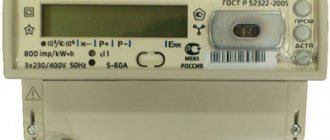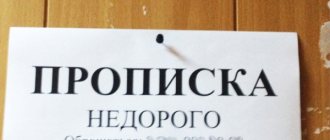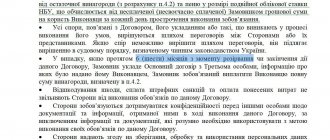An effective pricing policy allows you to successfully implement strategic business development goals. At the same time, there is no universal pricing method that ensures the effectiveness of the pricing policy for any company. Therefore, each company must choose a method that will be optimal for it.
In practice, cost, market and parametric pricing methods are used. From the article you will learn in which cases it is profitable to use cost methods and how to calculate the selling price of products using various types of cost pricing.
We evaluate a business using a cost-based approach
The cost of an appraised object is determined as the sum of the costs required to create the same object, taking into account depreciation. An important nuance is that what is taken into account is not how much money the entrepreneur spent on the business, but how much money it will take to recreate the same company.
For example, the coffee machine that Oleg has in the client area was donated by friends for opening a business. The acquisition cost is zero rubles. A new car of the same model will cost 30,000 rubles. But to assess the value of a business, you will need its market price. Now this model with the same degree of wear costs 20,000 rubles. This cost will be used in the assessment.
The cost approach includes two methods:
Net asset method
The value of a company is equal to the sum of all assets minus liabilities. Oleg analyzed how much the equipment and furniture cost, subtracted the loan obligations and got a result of 630,000 rubles.
Liquidation value method
A business is viewed as a set of assets that need to be sold as quickly as possible to pay off liabilities. In this case, the value of the assets obtained by the previous method is adjusted by the discount (the amount of the discount to speed up the sale) and the cost of advertising.
Suppose Oleg decided to move and sell the dry cleaning business as quickly as possible. He sells all assets at a 10% discount and plans to spend another 30,000 rubles on advertising.
Discount = 830,000 x 10% = 83,000 (rubles) Asset value =0 = 747,000 (rubles) Business value =0 - 200,000 = 517,000 (rubles)
Sergey Verbitsky , trouble shooter, mentor:
“A business assessment is needed if you are preparing for some event. For example, take a loan from a bank, sell the entire business or part of it, attract investments. It can be done independently, but the other party may not trust such an assessment. To avoid this, you can contact a third-party company. Each assessment method has its pros and cons. It is better to choose the one that is familiar to the investor. If a third-party specialist evaluates a business, then he knows better which method the bank, fund or investor prefers.”
We evaluate using the income approach
If the cost approach is based on the value of the property, then the income approach is based on determining the expected revenues from the business. It assumes that the business will generate stable profits over a long period. Abrupt changes in the economy, lockdowns, and revolutionary offers on the market remain “outside the brackets.” Thus, the owner of an oil rig will calculate the value of the business based on current profits, without thinking about the growing popularity of electric vehicles.
The income approach also includes two methods:
Discounted Cash Flow Model
Based on future profits. To understand how much money a business will bring in in the future, a cash flow financial model, similar to a cash flow statement, is built.
Oleg's dry cleaning brings in 40,000 rubles a month. It was not difficult to find out this data, since Oleg has been keeping records in the Planfact service since the opening. The cash flow in the next three years will be:
Cash flow = 40,000 x 12 x 3 = 1,440,000 rubles.
It would seem that the job is done. But it's not that simple. Money now is worth more than money in the future. We all have examples of how something used to cost less than it does now. Real estate, goods, services, and travel are becoming more expensive. Every year the volume of goods that can be bought for 1000 rubles decreases. This means that 1000 rubles in 2031 will cost less than 1000 rubles in 2021. The reduction in the value of money is shown by the discount rate. It can be determined by various methods, calculated based on expert opinions or income from reliable instruments, for example, government securities. Most often, it is higher than the deposit rate, since it takes into account that business investments are riskier. And the more reliable the business, the lower the risk and the lower the discount rate.
To make calculations easier, you can use the NPV (net present value) function in Excel or the NPV function in Google Sheets. Oleg considered that he had a stable, income-generating business, so he set a discount rate of 30%. With a projected income of 480,000 rubles per year, the value of the business is currently 871,734 rubles.
Capitalization method
Values a business based on past earnings. Profit over the last 3-5 years is summed up, averaged and divided by the capitalization rate. The result is the value of the company. The capitalization rate is the rate of return on an investment, calculated by industry or market.
Industry Cap Rate = Annual Income / Property Value
Company value = Average annual company income / Capitalization rate
Polina Kaplunova, development director at Smartcamper:
“The profit approach holds that the value of a business lies in its ability to produce wealth in the future. If a business had revenue of RUB 1 million last year and the industry average capitalization rate is 10%, you can estimate the value by dividing RUB 1 million by 10%. The total cost of the company will be 10 million rubles. Valuing a sole proprietor's business can be a challenging task since customer loyalty directly depends on the personality of the business owner. Will customers automatically expect the new owner to provide the same level of care and service? Therefore, the valuation of a business must include the risk that the business may be lost as a result of a change in ownership. Although the profit valuation method is the most popular, it is most correct to use a combination of business valuation methods."
Appraisal approach
The choice of a certain method of assessing value is determined by factors that indicate the current financial position of the company and its prospects. The financial situation and prospects of the business influence the calculation of the value of the enterprise. The calculation, in turn, is based on the use of the following three methods: cost, income and comparative.
Expensive
The method involves analyzing the value of the company taking into account all costs. The value of the business and assets will be equal. In this case, all obligations must be repaid.
Profitable
the method is more optimal from the investor’s position. In this case, companies see behind the cost not a complex of assets in the form of buildings, equipment, tools, intangible assets, etc., but a profitability forecast. The income method implies that the investor will not give more money for a specific company than the current amount of prospective profit from the company's activities. At the same time, there are two promising ways of generating profit in the form of sources of financing for one’s own capital and for investment capital (taking into account one’s own and borrowed capital).
Comparative
The method implies that the value of a company depends on how much it can be sold for, provided that the market is fairly mature. In other words, the estimated value of a company that is currently being assessed is equal to the price for the same company set by the market.
During the analysis procedure, the appraiser must use (if not used, there must be a justification for this) the specified three assessment methods. However, a specialist can himself, within each valuation method, apply other cost estimation methods.
In each specific case, the results of all three methods may show different results. Which result to choose - everything comes from what this assessment is intended for, the nature of the information and its accuracy.
Cost method
The cost method involves analyzing the value of the company, taking into account all costs, including everyday ones. To do this, first the validity of the market value of all funds is assessed, then the actual value of the liabilities is assessed. And, in the end, the current value of liabilities is subtracted from the market value of all company funds. The result is the estimated value of the company's capital, excluding investment capital.
This approach is based on two methods:
- method of calculating value that includes net assets;
- method of calculating liquidation value.
The method of calculating liquidation value is used as a last resort when selling a company. For this reason, this article is calculated using the net asset value method only. Several points are included in the calculation:
- the company’s property is assessed at current market prices;
- the assessment of intangible assets is determined;
- a market assessment of long-term and short-term financial investments is given;
- the current price is assigned to all inventory supplies;
- an analysis is made and an assessment of receivables is given;
- costs are forecast for the upcoming periods;
- the value of the company's liabilities is determined;
- The company's cost of capital is calculated by subtracting the current value of the company's liabilities from the market value of all the company's assets.
Method for calculating net asset value
are used when the company has significant material resources, and optimistic forecasts are given that it will operate for a long time.
In order to assess the value of a company, initial information from financial reporting documents is used, namely: balance sheet, information on income and expenses, cash flow, additions and transcripts. In this case, it is necessary to adjust the information in advance based on current inflation.
There is also a methodology for adjusted net assets and unadjusted ones. With adjusted net assets, all components of the balance sheet are adjusted, that is, the market value of all company funds is established. The calculated results using this method are more accurate than those obtained by the second method. Because due to the lack of accurate information, it is not possible to adjust the components of the balance sheet.
Net assets are understood as a value determined by subtracting the amount of its liabilities accepted for calculation from the amount of assets of a joint-stock company accepted for calculation.
The funds included in the calculation are the company’s property in monetary terms and not only. It includes the following components of book value.
- Non-current assets, which are reflected in the first part of the balance sheet; items indicating the value of the company’s own shares, which were purchased from shareholders, are excluded. When calculating the value of net assets, the intangible assets indicated in the first part of the balance sheet are also taken into account, which meet the following conditions:
- those that are used by the joint-stock company in performing the main function and provide profit (the right to use land, natural resources, permits, inventions, organizational expenses, logos, etc.);
- those that have an official justification for costs and are associated with their purchase (manufacturing);
- society must have the rights to own these intangible assets, which must be documented - a license, agreement, etc., issued by government departments;
- The item “other non-current assets” takes into account the debt of the joint-stock company on the property purchased by it.
- Supplies and expenses, cash and other assets included in the second part of the balance sheet. This does not include the debt of the co-founders associated with their investments in capitalization, and the value of the shares purchased from the co-owners on the balance sheet.
If a joint stock company at the end of the year has valuation reserves for uncleared debts and shares that have lost their importance, the calculations of the items on the basis of which they were created will be taken into account (available in the calculations) at a reduced book value exactly as much as these reserves are worth.
Liabilities that are included in the calculation are the debts of the joint-stock company, consisting of the following items:
- monetary support aimed at certain specific purposes;
- long-term obligations to banks and other organizations and individuals;
- short-term obligations to banks and other organizations and individuals; settlements, various liabilities, in addition to the funds indicated under the items “Deferred income”, “Consumption funds” and “Reserves for future expenses and payments”.
The use of the net asset method does not take into account the growth prospects of the enterprise. Because of this, the current value of the business is significantly distorted in a particular situation.
The second method is the liquidation value method.
- applicable for companies in bankruptcy or in a situation where the value of the company during bankruptcy will be greater than during its activities. When applying this technique, the appraiser determines the gross profit from the liquidation of the company's funds, then it is reduced by the amount of direct expenses that are associated with the bankruptcy of the company, and, in addition, by the amount of all the company's liabilities.
Comparative methodology
Comparative methodology
is based on the concept of a productive market where investors buy and sell funds of the same type, independently of each other. The results of similar transactions are compared with the analyzed ones. The pros and cons of the products being evaluated in comparison with selected analogues are taken into account through the application of the necessary adjustments.
Depending on whether the necessary information is available, how accessible it is, the description of the object of analysis, the object and nuances of the planned transaction with the analyzed item in the conditions of the comparative methodology, the following methods are used:
- analogue enterprise method;
- method of transactions;
- method of industry indicators.
Analogue enterprise method
The analogue enterprise method is usually used in a situation where the share of the analyzed participation in capitalization does not belong to the control one.
The source of information on the cost of the same transactions with similar objects of valuation will be information on the cost of transactions with various securities carried out within the framework of accessible stock markets (for example, on exchanges, as well as in accessible trading systems outside exchanges), in a situation where the subject of a similar The transaction does not authorize its owner with any control rights.
In a situation where the subject of valuation is a controlling share, the appraiser is obliged to make adjustments commensurate with the monetary incentive for the controlling share.
Transaction method
The transaction method is usually used in situations where the size of the analyzed share in the capitalization relates to the control one.
Information on the cost of similar transactions with the same items of analysis is taken from the following information:
- information on the cost of transactions with various securities, monetary participation in capitalization, in situations where the subject of such a transaction authorizes its owner with all or several control rights;
- information on the cost of operations in the form of mergers, acquisitions or purchase of the entire company (business).
In situations where the subject of analysis is a share that is not a control share, the appraiser is required to make adjustments for a discount commensurate with such share.
Industry indicator method
Information is taken, as usual, from sources of highly specialized industry research works, which are compiled on the basis of an analysis of at least 50% of the total number of companies in this industry. Moreover, they must be comparable in scale to the one being analyzed.
The appraiser checks and reflects in the final documents transactions that are intended to establish the compliance of the results of such studies with the assessment methodology used, its meaning, the characteristics of the subject of the object of assessment, the object and requirements of the expected transaction with the subject of analysis.
The appraiser must check and reflect in the conclusions the compliance of the indicators obtained using the specified methodology with the indicators obtained using other methods and assessment techniques.
As a result, the readings obtained using this technique will be indicative and are not used when calculating the final cost value, or they are given the smallest specific weight.
Income way
The income method is used in cases where it is realistic to draw up a long-term development plan for the enterprise (drawing up a financial scheme). Based on the principle of the income method, the authorized capital method and the discounting method are used.
Income analysis involves drawing up a scenario for future income growth. Which method to choose depends on the stability of profit. Based on this, the authorized capital method or the discounting method is selected.
If the projected profit will be the same as today, or development seems stable, then the authorized capital method is used. This technique also implies a long, but non-specific period of operation of the enterprise.
The discounting technique is used when the company's income is variable and unstable. Also in situations where the company’s activities are interrupted (the reasons for this may be very different) in the foreseeable future or it is planned to go out of business. The analysis using this method includes forecasting the receipt of money for all years of the forecast period.
The next step is to calculate the enterprise value at the time the forecast period ends. The approximate value of the enterprise is calculated as the sum of the current cost of financing for the forecast period and the current value of the cost at the time when the forecast period ends. If necessary, adjustments can be made (for example, the amount deducted for something that does not belong to the control and the amount deducted due to low liquidity are taken into account), and the final market value of the enterprise is calculated.
Discounted financing method
The value of an enterprise using this method is obtained by summing up the currently available (discounted) prospective free financial resources of the enterprise, in other words, it is found using a simple formula:
PV= S
(CFi/ (1 + r)i)
| Values: | |
| PV | current value of prospective free cash flows in the amount; |
| Cfi | free funds for time period i; |
| R | discount rate; |
| I | number of the discounting time period in order. |
It follows from this that the discounted finance technique implies:
- calculation of forecast boundaries;
- forecasting cash flow patterns;
- determining the value of the enterprise for the period when the forecast period ends;
- determination of the discount rate;
- determining the approximate value of the company;
- making adjustments and determining the final cost.
To calculate the value of an enterprise for the period after the end of the forecast period, you can use different methods:
- method of calculation at the liquidation price (for the case when in the remaining period it is planned to sell (for a variety of reasons) the assets of the enterprise);
- calculation method based on net asset value (used for a sustainable enterprise with significant material resources);
- method of expected sales (old data on sales of the same enterprises are used);
- Gordon's model.
Authorized capital method
This method is similar to the discounting method and is based on the principle that the value of an enterprise depends on the current cost of profit in the future. This method is usually used when it can be assumed that the enterprise's profit will be constant and it will operate indefinitely. Using the method includes the following operations:
- study and preparation of financial statements;
- analysis of income included in the authorized capital;
- determination of the authorized capital rate;
- determination of the estimated cost of the enterprise;
- adjustments in the presence of ineffective funds;
- adjustments based on the share of share capital;
- liquidity adjustments.
During the analysis of the financial statements of an enterprise, single and variable income and expenses are encountered, free financial flow is determined, and other necessary calculations are carried out.
During the assessment of income in favor of the authorized capital, a decision is made on what is taken as the main thing: income or cash flow, the average statistical indicator is calculated and amendments are made to the taken indicator.
We use a comparative approach
To assess the value of a business using a comparative approach, you need to select several transactions on the market with similar companies for which the selling price is known. The comparison is made based on some common indicator. This could be revenue per square meter of area, room occupancy, number of seats.
Oleg contacted his friends who owned dry cleaners, looked at advertisements for sale and collected a database for analysis. It included 4 companies with a similar range of services and location in cities with a population of 300 to 500 thousand people, like his business. Oleg chose the number of washing machines as the main indicator for comparison, because sales volume depends on it.
As a result of the analysis, it turned out that the selling price of a business per washing machine ranges from 150,000 to 200,000 rubles, and, on average, is 182,500. If you multiply this value by the number of washing machines in Oleg’s dry cleaning, you can get the cost of it business using the comparative method.
182,500 x 4 = 730,000 (rub.)
Polina Kaplunova, development director at Smartcamper:
“The comparative approach is to determine the value of a company in comparison with similar ones that have recently been sold. The idea is similar to using real estate comparisons to evaluate an apartment or house. This method only works if there are enough similar companies to compare. Assessing the value of a sole proprietor's business based on market value is particularly difficult, as it is often impossible to find publicly available information about previous sales of similar businesses."
THE ESSENCE OF DIFFERENT TYPES OF COST PRICING METHOD
Full cost method
This method implies that the selling price of products should be equal to the sum of all direct and overhead costs or the sum of variable and fixed costs plus the company's profit margin added to them. With this method, direct/variable costs are calculated according to the product range, and overhead/fixed costs are distributed among them according to algorithms approved by the company.
Direct Cost Method
The method is based on the summation of direct costs and a sales markup on them, which should cover the amount of overhead costs and provide the company with a profit margin. However, overhead/fixed costs are not allocated to the cost of production. They must be repaid from the difference between the amount of product sales and the sum of all direct costs of the company.
Marginal cost method
It is based on a comprehensive analysis of the cost of each range of products (services) of the company with the subsequent calculation of a selling price that will allow for additional profit after exceeding the estimated sales volume.
Price markup method
This method is mainly used by trade organizations. The essence of the method: a certain trade margin is added to the purchase price of the goods. At the same time, the sum of the markups of all goods sold must cover the company’s operating expenses (logistics, commercial and administrative) and provide a given amount of profit.
Break-even analysis method
It consists of a mathematical calculation of the selling price of a company’s products (services), which will provide it with a given rate of profit.
Let's sum it up
So, Oleg got three different options for the value of the business:
- 630,000 rubles calculated using the cost approach;
- 871,734 rubles were obtained as a result of income;
- 730,000 rubles is the result of an assessment using a comparative approach.
These amounts gave Oleg an understanding of what price he could start negotiations at and what price it would be better not to go below. The buyer may or may not agree with the evaluation results and the price of the business, but Oleg knows what to focus on during the transaction.
Marina Zakharova, CEO of Dolce Style:
“When I was selling a stake in a business, I used a simple approach, based on how much people were actually willing to pay. I tried to involve appraisers, but it didn't help. As a result, I sold the share for an amount equal to the annual profit.”
Jan Petruchik, founder of the Mediaobraz digital agency:
“I sold two ready-made businesses: a store and service for Apple equipment, a point selling hot dogs in a shopping complex. The assessment was carried out using a simple formula: Business value = Annual profit + Asset value In the store, I considered the following assets to be assets: trade equipment: stands and tools. For a fast food outlet, I added the cost of refrigerators and other equipment to the annual profit. Accounts on social networks and customized advertising campaigns were transferred to buyers for free.”
Let's summarize
- Assessing the value of a business is a complex process that may be necessary when selling a company, insuring it, or attracting investments.
- The owner can periodically evaluate his business to observe dynamics.
- Three approaches are used in the assessment: costly (how much money is needed to recreate the same business), profitable (the business is assessed based on profit) and comparative (the company is compared with similar ones).
- For a more accurate assessment, it is better to use two different methods; if the results are close, everything was done correctly. A large difference in assessment indicates a distortion of the result.
OBJECTIVES AND METHODS OF PRICING
Pricing policy is the most important part of the marketing strategy for promoting the company's products and services in the sales market. Pricing policy is implemented through a pricing mechanism, with the help of which the selling price of a unit of products and services is determined. The main objectives of pricing are to provide companies with :
- compensation for all its operating costs;
- profit in the amount necessary to develop the business and receive dividends on the capital invested by the owners;
- a market-competitive combination of price and consumer properties of its products/services.
To solve these problems, different methods are used. The choice of methods is determined by many factors:
- industry specifics of the company;
- consumer characteristics and features of products/services;
- organization of business processes and cost structure of the company;
- degree of competition in sales markets;
- business development strategy, etc.
Pricing methods are classified into three groups:
- costly - based on taking into account the costs necessary for the production and sale of products/services and management of the company’s business;
- market - based on competitive prices in the sales market and the requests of end consumers of products/services;
- parametrically - determine the selling price of the company's products/services based on their technical and economic parameters and approved cost standards.
Each group of pricing methods has several varieties (see figure).
As can be seen from the figure, the cost-based pricing method has the most variations.
They should be selected based on a thorough economic analysis and performance assessment in relation to a particular company.









